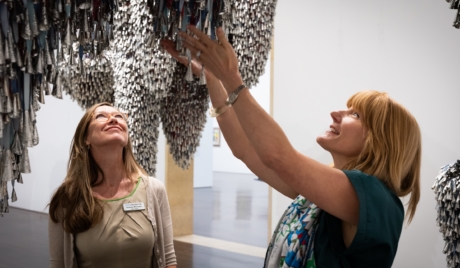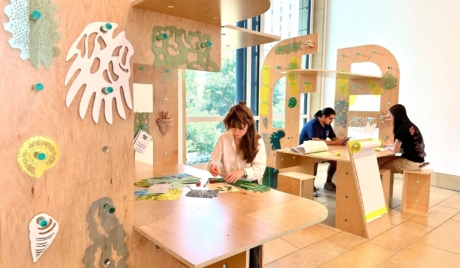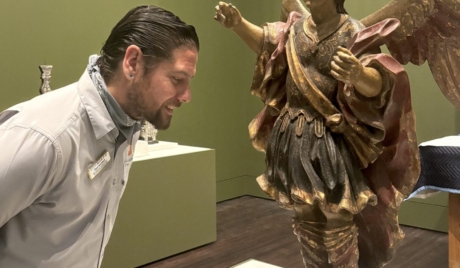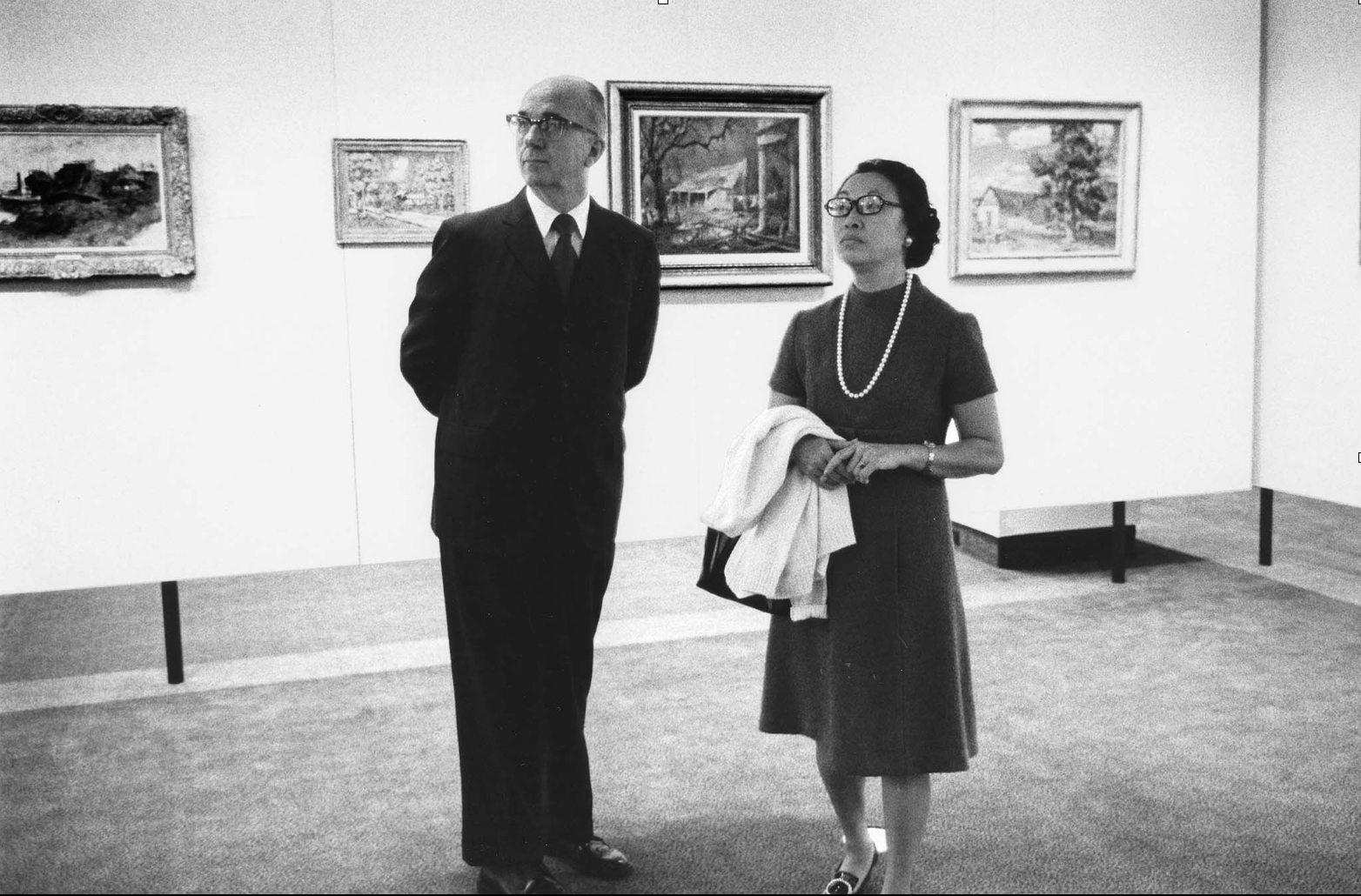
Mari Sabusawa Michener: A Legacy Celebrated
by Claire Howard, Assistant Curator, Modern and Contemporary Art, Blanton Museum of Art
Many visitors are interested to discover that the Blanton Museum of Art is home to the vast art collection of writer James A. Michener (c. 1907–1997) and his wife Mari Sabusawa Michener (1920–1994), whose gifts to The University of Texas at Austin made the couple, by 1992, the largest individual donors in the university’s history. While the Pulitzer Prize-winning author’s name may be better known, Sabusawa was a distinguished civil rights advocate and philanthropist in her own right, whose legacy we celebrate for this year’s AAPI Heritage Month.
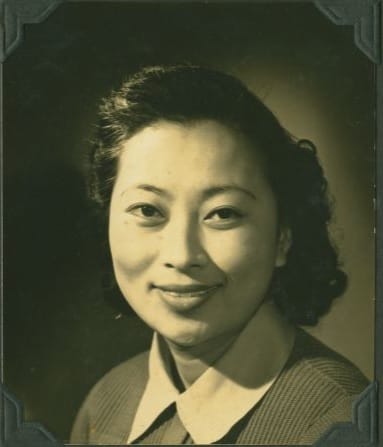
Sabusawa was born Mari Yoriko Sabusawa in 1920 in Las Animas, Colorado. Sabusawa was a Nisei, or second-generation Japanese American, born to immigrants. After moving to California, she completed high school at Long Beach Polytechnic, where she joined the school’s Japanese Friendship Circle, as well as a local Nisei girls club, the Nipponettes, and was active in the Japanese Presbyterian Church. After high school, she attended Long Beach Junior College and became active in the local branch of the Japanese American Citizens League (JACL). In April 1942, the U.S. government forcibly removed the Sabusawas from their community and incarcerated them, first at California’s Santa Anita Assembly Center, then the Granada Relocation Center (Amanche) in Colorado. They were among 10,000 people, most American citizens, incarcerated at Amache between 1942 and 1945.
Sabusawa soon received a scholarship that enabled her to leave the confinement center and enroll at Antioch College in Ohio, where she was the school’s first Japanese American student. There, she studied political science and international relations and, shaped by her firsthand knowledge of unjust incarceration, began her life of civil rights advocacy. As Chairman of Antioch’s College Race Relations Committee, she helped raise scholarship funds for Black students, and as a student representative on the school’s Community Council, she educated local organizations about Japanese Americans’ experiences. Through Antioch’s cooperative jobs program, Sabusawa also worked translating and analyzing Japanese news and propaganda for the Foreign Broadcast Intelligence Service in Washington, D.C.
After graduating from college in 1945, Sabusawa moved to Chicago, where she worked for the American Council on Race Relations (ACRR), eventually becoming its Assistant Director. She also remained active in the Japanese American Citizens League (JACL), serving in local leadership roles and on the organization’s national board. Her graduate studies in sociology at the University of Chicago complemented this work. Sabusawa’s view of race was distinctly intersectional; she encouraged Nisei to see the racism and discrimination they faced not as an isolated issue, but as part of a larger societal problem that negatively affected all minorities.
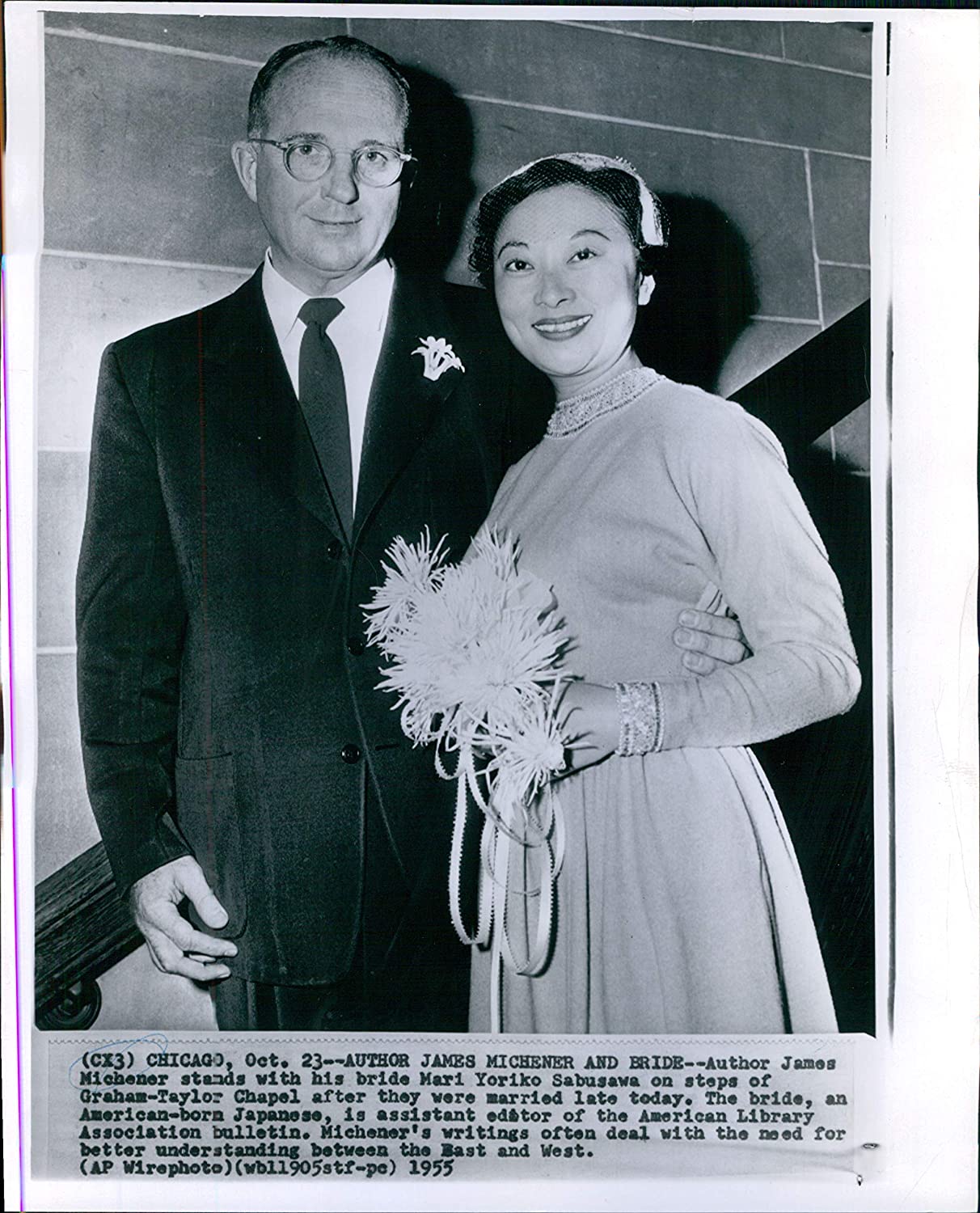
In 1954, Sabusawa met James A. Michener at a lunch sponsored by LIFE magazine, which had commissioned the author to write about Japanese “war brides” in the Chicago area. Sabusawa was volunteering with a group helping to resettle American GIs who married Japanese women. Michener’s Pulitzer Prize-winning Tales of the South Pacific (1947) and Sayonara (1953) had addressed the issues faced by white-Asian couples; despite his fame, Michener and Sabusawa likewise encountered discrimination after they wed in 1955. The couple traveled together constantly on extended research trips around the world for Michener’s novels. In the early 1980s, this brought them to Austin, after Governor William Clements invited Michener to write a novel about Texas.
The University of Texas at Austin had housed much of the Micheners’ collection of roughly 300 American paintings since 1968; the gift of their collection was finalized in 1991. Michener sought to build a teaching collection that would highlight achievements in 20th-century art in the U.S., particularly postwar artists’ experimentation with abstraction. He wrote that he was fortunate that, “My wife shared my enthusiasm [for collecting] and has found her own taste to be similar to mine…. About half the good paintings in the collection have been chosen by Mrs. Michener.”1 Sabusawa also played a vital role in directing the couple’s financial donations—eventually totaling more than $100 million—to universities and museums. Their 1986 gift of $1 million endowed the Texas Center for Writers, now the Michener Center for Writers, the esteemed, fully funded MFA writing program at UT Austin. The couple also gave significant support to the Iowa Writers’ Workshop, Swarthmore College, and the University of Northern Colorado, and created the Mari Sabusawa Scholarship Fund for minority students at Eckerd College in St. Petersburg, Florida. At the James A. Michener Art Museum in the author’s childhood home of Doylestown, Pennsylvania, Sabusawa funded the Mari Sabusawa Michener Endowment and Mari Michener Docent Award, underwriting and recognizing the museum’s educational efforts.
Sabusawa died of pancreatic cancer on September 25, 1994, in Austin. Her generous bequests supported the construction of the Mari Sabusawa Michener Wing at the Michener Museum; her alma mater, Antioch College; and the American Baptist Churches’ scholarship fund. In Austin, her $5 million bequest stimulated the campaign that resulted in the Blanton’s current building, which opened in 2006. The museum’s permanent collection and exhibitions are housed in the Mari and James A. Michener Gallery Building, a tribute to the indelible impact the couple had on their adopted hometown.
For more information on Mari Sabusawa Michener, see Greg Robinson’s biography on Discover Nikkei.
Footnote
1 James A. Michener, “The Collector an Informal Memoir,” in The James A. Michener Collection: Twentieth-Century American Painting (Austin: The University of Texas, 1977), xiv–xv.

